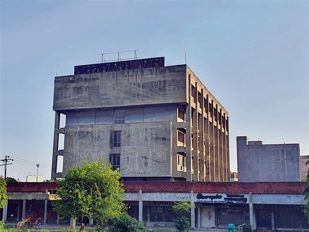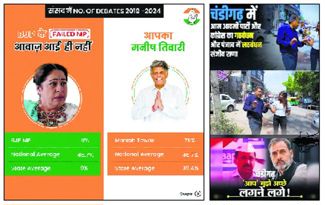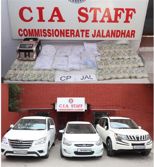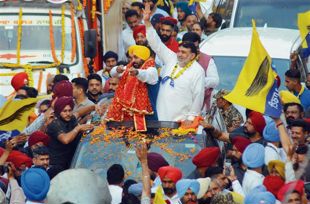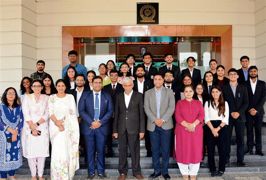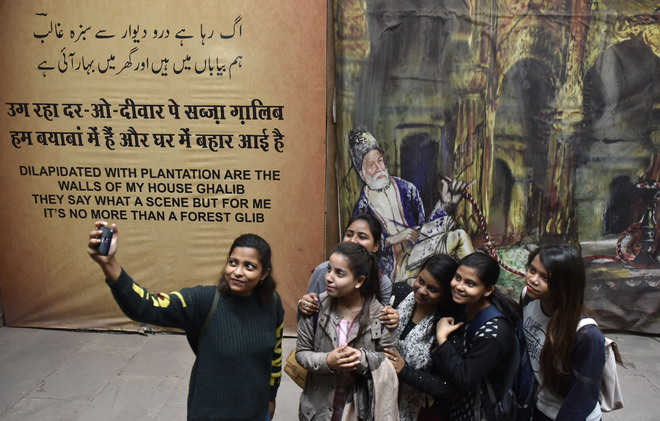
Experts have reservations regarding the translation of Ghalib’s poetry
Swati Rai
Mirza Asadullah Khan Ghalib, the doyen of Urdu and Persian poetry, lived through the times of high culture and literature in old Delhi. While his poetry remains the most pious connect with his fans, Ghalib’s haveli and tomb in the city are a tangible legacy losing significance in our times.
Ghalib’s tomb in Basti Nizamuddin and the haveli-turned-museum in Gali Qasimjan, Ballimaran, are a must visit for Ghalib lovers. Saif Mahmood, advocate and author of Beloved Delhi: A Mughal City and her Greatest Poets, says this haveli is where Ghalib stayed from 1860-1869 and breathed his last. However, he is not very positive about the upkeep.
“Following a PIL filed in the Delhi High Court in 1996, the Delhi Government was directed to restore some parts of the haveli. The subsequent cosmetic conservation that followed now makes it look more like a page from the illustrated Arabian Nights, than a tribute to Ghalib,” laments Mahmood.
He says the process lacked gravitas and showed a linear image of the bard, solely as a bon vivant. “Ideally this should have been a multi disciplinary task, involving museumologists, historians, anthropologists, literary historians, archaeologists and experts in Urdu culture, etc. to add to the intellectual depth.”
Heritage activist and author Sohail Hashmi says the photographs depict Ghalib as a drunken rake with a wine decanter and goblet next to him. He also feels the restoration is tacky. “The exposed brick structure was not the material prevalent at that time. Also the translations of the verses all around appear trite and reek of a hasty job done,” he says and points out that the calligraphy done on the books displayed could have been better too.
For experts, awareness generation appears to be the binding thread in conservation of such heritage sites. On the sidelines of a commemorative heritage walk to Ghalib’s haveli, Hashmi shares, “From Percival Spear to Narayani Gupta, founder of Delhi Heritage Society, stalwarts in heritage tours and walks have been everyone’s inspiration and have been duly followed. However, in the current times, Wikipedia has become the source of some fly-by-night heritage tour leaders. Their little knowledge does more harm to the great than good. To lend authenticity to the preservation and conservation work, people in the know need to get together and represent themselves as a group so that culture isn’t misrepresented in any way.”
In the larger context of conservation of Ballimaran and Shahjahanabad, author Swapna Liddle, who is also convener of Indian National Trust for Art and Cultural Heritage, sees the redevelopment pressure on the areas housing historic sites as the real danger to heritage.
“If we look at the site of Ghalib’s haveli, the problem lies in the conservation of the historic neighbourhood of Ballimaran, in fact, Old Delhi, i.e. Shahjahanabad, itself. The redevelopment pressure is leading to the replacement of havelis with denser construction. If the old havelis with their courtyards don’t survive, I think we lose a big part of the legacy. There is no Ghalib without the city he lived in. The havelis should ideally be repaired and restored, and the infrastructure should be improved so that everyday living conditions of residents are improved and they are not prompted to leave,” says Liddle.
Perils of popular culture
INTACH convener Swapna Liddle considers Ghalib’s poetry as his true legacy. “Though there is now a resurgence of popular interest in Urdu poetry, there’s a need to understand the language in greater depth. Instead of putting a well-known couplet of Ghalib on a T-shirt, it would be better to read a good commentary explaining the nuances of that sher.” She also highlights the need to integrate Urdu and Farsi languages in school curriculum.





















